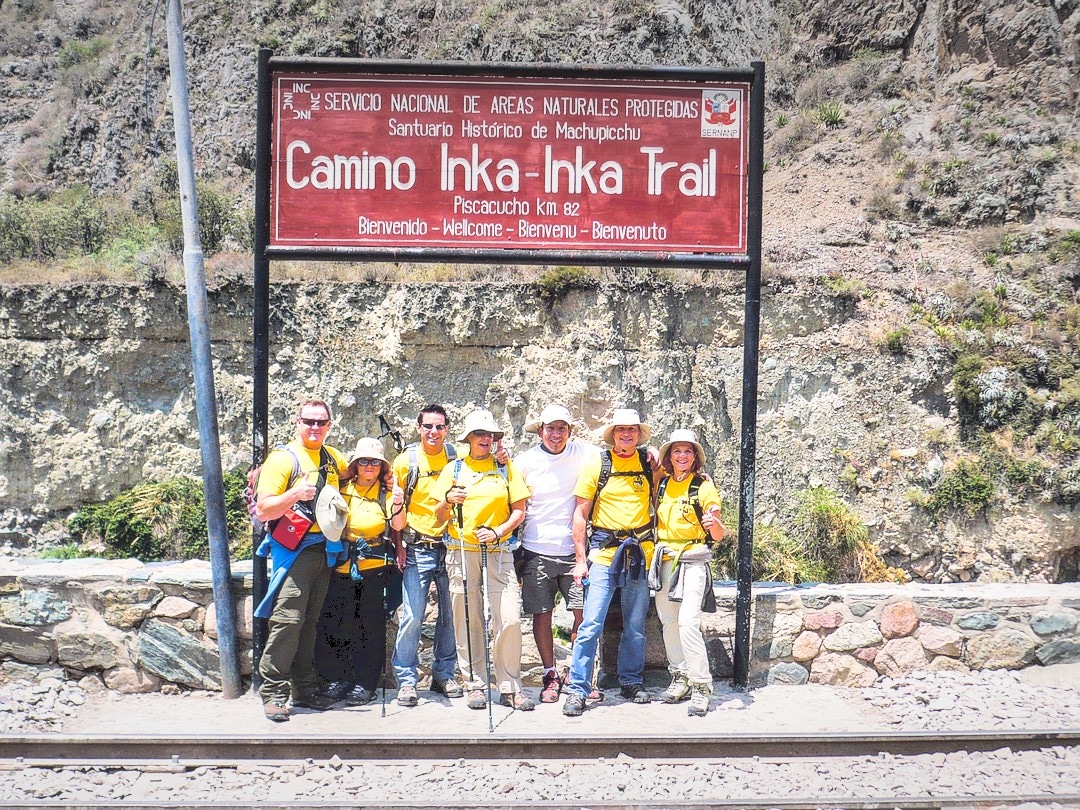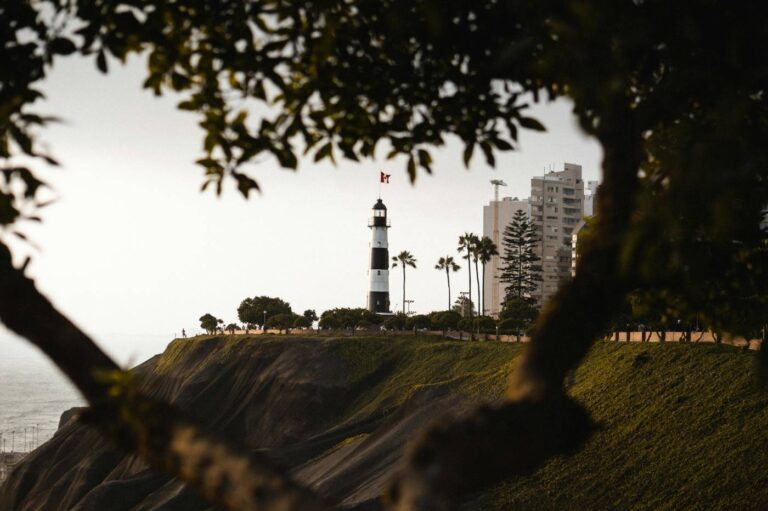One of the easiest ways to see Cusco and its surrounding attractions is to hop on one of the Cusco day tour. The group tour is typically 5 hrs., runs 1:30pm-6:30pm, and is led by 1 guide and 1 driver. Typically cost for the group tour is s./20-40 (US$7-$15) per person, with tour size of 15-20 people. The tour will pick you up from your hotel in a mini bus, which will then take you to various places in and around Cusco (Cathedral of Santo Domingo, Qurikancha Temple of the Sun, Sacsayhuaman, Q’enko, Puca Pucara, and Tambomachay). Private tour cost approximately US$120-130 (2-6 person), but this isn’t necessary as the typical group tours are very good. Tours can be in Spanish, Japanese, Chinese, or English, and can be arranged at any hotel/hostel concierge. (Tips: We found the tour desk at Milhouse Backpacker and Hotel to have a very reasonable group tour price of s./20-30 per person)
For those who have a lot of time, self-guided tour can be done by walking and taking local buses/taxi. For the reasonable of s./20-40, why bother.
Entrance Fees and the Boleto Turistico
In addition to the tour cost, you are required to pay for the admission of the various sites separately. It is recommended to just buy the Boleto Turistico (s./130 or $47 USD, s./70 for students, free for children under 10), which allows you to visit most the sites in Cusco and Sacred Valley (including but not limited to Ollantaytambo Temple, Pisac ruins, Sacsayhuaman) in the 10 days timeframe. A partial BTG is available for s./70 or $26, which is valid for only 1 day. Note that you will still have to pay separate the entrance fee for Cathedral of Santo Domingo (s./25) and Qurikancha Temple of the Sun (s./15). The Boleto Turistico does not cover Machu Picchu and the salt mines.
You can buy your Boleto Turistico from the COSITUC office and tourist information point on Avenida El Sol 103, and from selected tourist offices and authorized travel agencies. The Boleto Turístico is also available at some of the major archaeological sites in and around Cusco. You should just buy it from the travel agency or hostel/hotel concierge when you book the day tour.
Typical Itinerary and Places the Tour Visits
Most tour will go through Plaza de Armas, Cathedral of Santo Domingo, a walk through portion of the city to visit Historic Walls and Masonary, Qurikancha Temple of the Sun, Sacsayhuaman, Q’enko, Puca Pucara, Tambomachay, a gift/Alpaca store, and end at Plaza de Armas (See details below)
Plaza de Armas – Dominated by the magnificent Cathedral, this graceful square is considered the heart of Cusco and is characterized by covered walkways, colonial arcades and houses containing numerous shops, restaurants and travel agencies.

Cathedral de San Francisco – Also known as Cusco Cathedral, is the mother church of the Roman Catholic Archdiocese of Cusco. The building was completed in 1654, and was designated a UNESCO World Heritage Site under the City of Cusco listing in 1983. The Cathedral has become a major repository of Cusco’s colonial art, holding many archeological artifacts and relics, including gold, silver, and the famous last supper painting of Peru. The interior is one of the most beautiful, but cameras are not allowed (put it in your bag or purse). It is a trip highlight and a must visit.
Ancient Inca Walls in Cusco, Peru
Historic walls and Masonary – The tour will take you through a short walk through the city and give a history of its historic walls, built 500 years ago. The stones are neatly locked together to perfection. Not even a piece of paper or a tooth pick can slide through. This interlocking system is the reason the walls have lasted through numerous earthquakes over the years.

Qorikancha Temple of the Sun – It was the most important temple in the Inca Empire, dedicated primarily to Inti, the Sun God. The walls and floors were once covered in sheets of solid gold, and its adjacent courtyard was filled with golden statues. The Spanish colonists built the Church of Santo Domingo on the site, demolishing the temple and using its foundations for the cathedral. Yet most of the bottom part of the temple is fairly well preserved and makes the site worth several hours of your time. The site is one of the best in Cuzco, containing both Catholic and Inca heritage with stunning views of the surrounding area. Looking at the outside from Avenida del Sol, you get a perfect view of the church standing on the temple and you see the differences of the Inca and the Spanish way of building.

Sacsayhuaman – Located on the hill overlooking the city of Cusco, Saksaywaman (pronounced very similarly to “sexy woman”) was an Incan fortress, vital to the protection and control of the city. The size of the stones at this fort is impressive, many are bigger than a car and the biggest is estimated to weigh in 200 tons. Yet, despite the sizes of the stones, they fit together so perfectly that you can’t fit a piece of paper between them. The inward leaning walls, rounded corners of the blocks, and variety of shapes used in building the fortress is said to have helped the fortress survive numerous earthquakes. This is where you want to take pictures of your little body next to these gigantic stones.

Q’enko – Located on a hill, the site was historically used for funerals and other rituals related to death, including sacrifice. On this little site, we find the remains of the celebrations to the gods, including the Sun God ”Inti”. On the roof of the edifice is found a stone sundial, and cut stones as often found on the sites, which show through their shadows: the solstices, the equinoxes, or the proper periods for agricultural plantations! Under the stone perfectly cut, there is an altar for sacrifice! According to historians, usually Lamas were sacrificed, although sometimes, men and children were sacrificed in great occasion!

Tambomachay– The site consists of a series of aqueducts, canals and waterfalls that run through the terraced rocks. The function of the site is uncertain: it may have served as a military outpost guarding the approaches to Cusco, as a spa resort for the Incan political elite, or both. Covering a limited expanse of just over one acre, it comprises 4 large terraces and two aqueducts that carry water, presumed to be from an underground spring higher up the mountain, to waterfalls descending to a basin below.

Gifts Shop/Alpaca Store – The final stop is the Alpaca store/ gift shop. Here, the store representatives show how to tell the different between a real or fake Alpaca, the difference between Alpaca and Vicuna. We do not know whether the Alpaca or Vicuna furs in the store are real or fake, but they were very expensive. Most of the visitors in our group bought small gloves and magnets, etc.
Tours end back at Plaza de Armas, just in time for dinner. For s./20-40, the trip is well worth it. Do shop around for best pricing, and often the lowest prices are not online!







